Over the past few years, Conrad Shawcross has become a master at blending his extraordinary sculptures into London’s urban and suburban fabric. The Dappled Light of the Sun graced the Royal Academy’s courtyard during the 2015 Summer Exhibition and Frieze Sculpture Park at Regent’s Park later that year, while Three Perpetual Chords (2015) and Paradigm (2016) are permanently sited in Dulwich Park and King’s Cross.
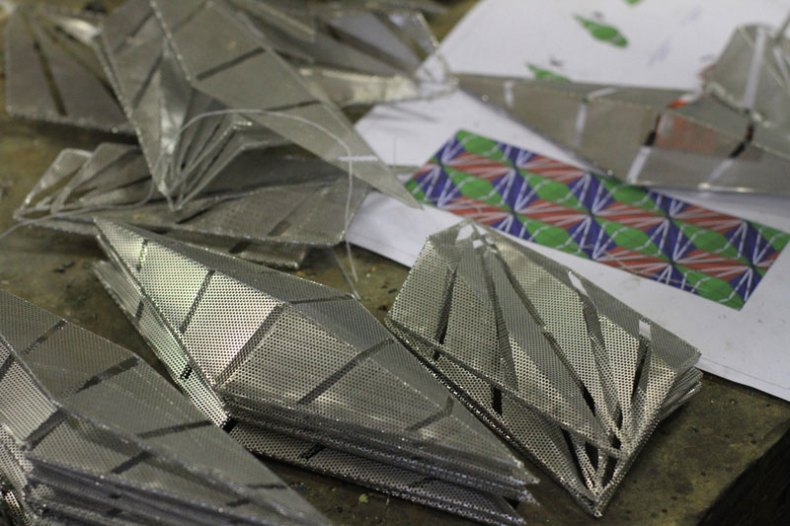
Conrad Shawcross, Maquette for The Optic Cloak in production. Photographs by Richard Forbes-Hamilton. Courtesy the artist and Victoria Miro, London
Recalling some of his earlier latticed work and towering mathematical structures, his latest project, in the Greenwich Peninsula, is his most ambitious in scale and scope to date. Shawcross is no stranger to Greenwich (in 2005, he displayed Continuum in the Queen’s House, as part of the National Maritime Museum’s ‘New Visions’ programme), and his new piece is joining a sculpture trail of sorts, dotted with works by Antony Gormley, Richard Wilson and others. Shawcross, however, is quick to say that The Optic Cloak is not a sculpture but an architectural intervention, subservient to a utilitarian function. It was commissioned for a low-carbon power station that will provide energy to 15,000 homes in one of Europe’s largest urban regeneration projects. The initial brief was to cover the chimneys of the Energy Centre, but rather than conceal the flues, Shawcross wanted to celebrate them, and played with the paradox of making them more visible rather than invisible.
The cloak doesn’t just adorn the structure, it is an integral part of it; it defines it. For Shawcross, the environmental concerns were an essential element of the project, in line with the nature of the power station itself. Rather than merely cladding the flues in a decorative mantle, Shawcross and his team worked directly with the existing structural designs, to create a lighter, more energy efficient structure than originally intended. Subtracting rather than adding material, they saved tonnes of aluminium from the plant’s initial design, to create a facetted metallic fin rather than a bulky, boxy slab. The moral imperative extended to Shawcross’s belief in public work having an impact on daily life. The Optic Cloak is intended not only to enliven the commute of motorists as they approach or leave the nearby Blackwall Tunnel, but to become a treasured landmark for the Peninsula’s residents.
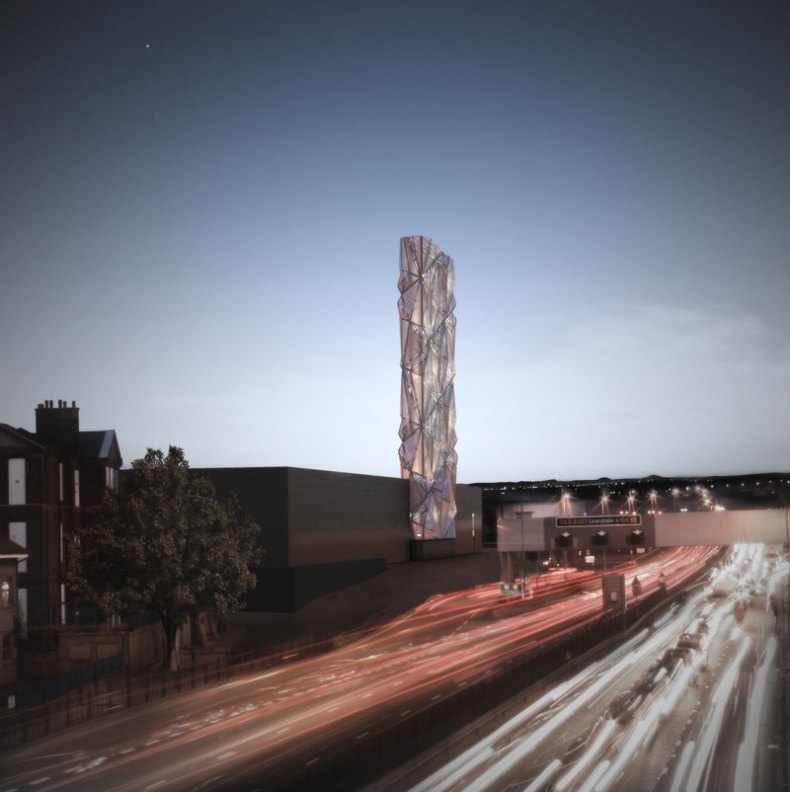
Night rendering of The Optic Cloak (2015), Conrad Shawcross, by C.F. Møller
Sometimes the greatest concepts come from the humblest beginnings. The Optic Cloak’s design came to Shawcross as he was experimenting with shape and configuration by folding a piece of paper. The apparent simplicity of the resulting pleated design belies the complexity of the engineering, and the sophisticated visual inspirations Shawcross drew from. The Optic Cloak borrows from mathematical geometry, cubism and Op Art, First World War dazzle camouflage (newly fashionable in this centenary period), but, most importantly perhaps, it borrows from its surroundings: the interference patterns of the nearby Victorian gas works, and the moiré effect of the mesh on the M25’s service bridges.
But it is light that truly makes the piece: Shawcross was inspired by the quality of light in the Greenwich Peninsula, the way it bounces off the river, how it soars and recedes on the façade of the buildings dotted around the flat land. From hour to hour, day to day, season to season, the sun’s path disrupts the perforated surface of the cloak to create new effects, marking the local residents’ daily rhythms with ever-changing spectacles. Light and organic in feel, The Optic Cloak is like a skin, it shimmers and breathes under the caress of the sun, undergoes an alchemical transformation from opacity to translucency, from base metal to silver and then gold.
Merging engineering and artistry in equal measure, this new addition to London’s skyline is encouragingly sympathetic to its natural (the river) and historic (the gasworks) surroundings – in contrast to the cacophony of often uninspired and uninspiring buildings springing up across the city. The Greenwich Peninsula development has come under scrutiny in recent years over its provision of affordable homes and its suitability for the area. It is to be hoped that the dwellings that eventually surround The Optic Cloak follow Shawcross’s approach.
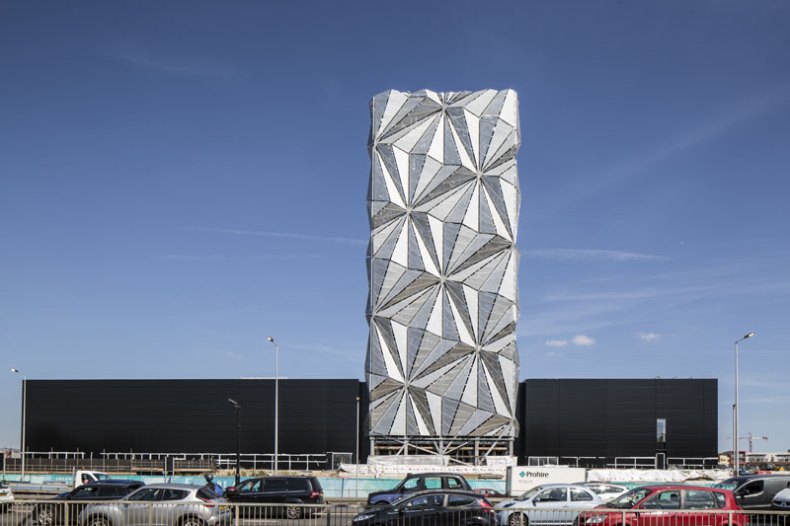
The Optic Cloak (2016), Conrad Shawcross. Photo: Marc Wilmot, courtesy of the Greenwich Peninsula
Unlimited access from just $16 every 3 months
Subscribe to get unlimited and exclusive access to the top art stories, interviews and exhibition reviews.

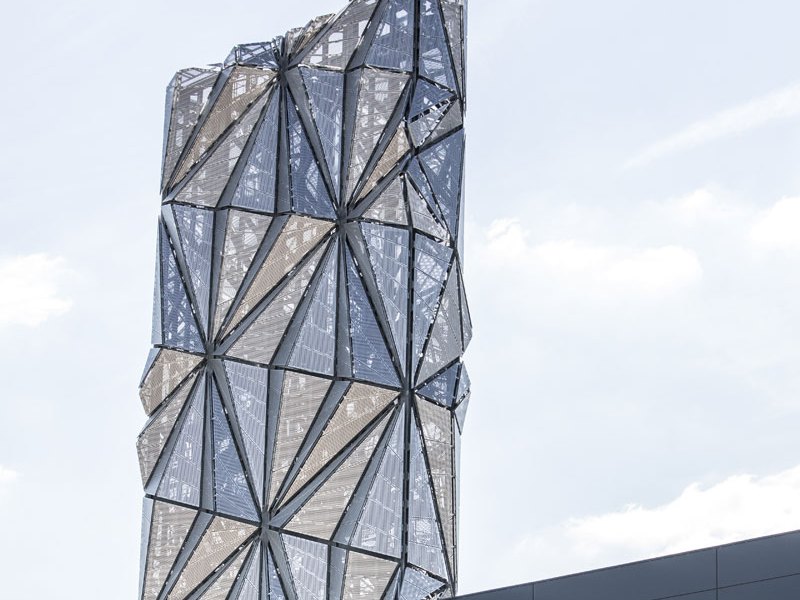


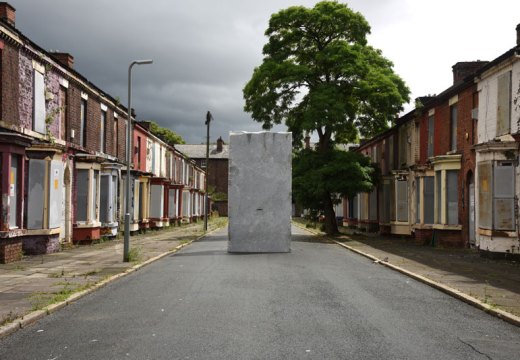









![Masterpiece [Re]discovery 2022. Photo: Ben Fisher Photography, courtesy of Masterpiece London](http://www.apollo-magazine.com/wp-content/uploads/2022/07/MPL2022_4263.jpg)
Why are fathers so absent from art history?